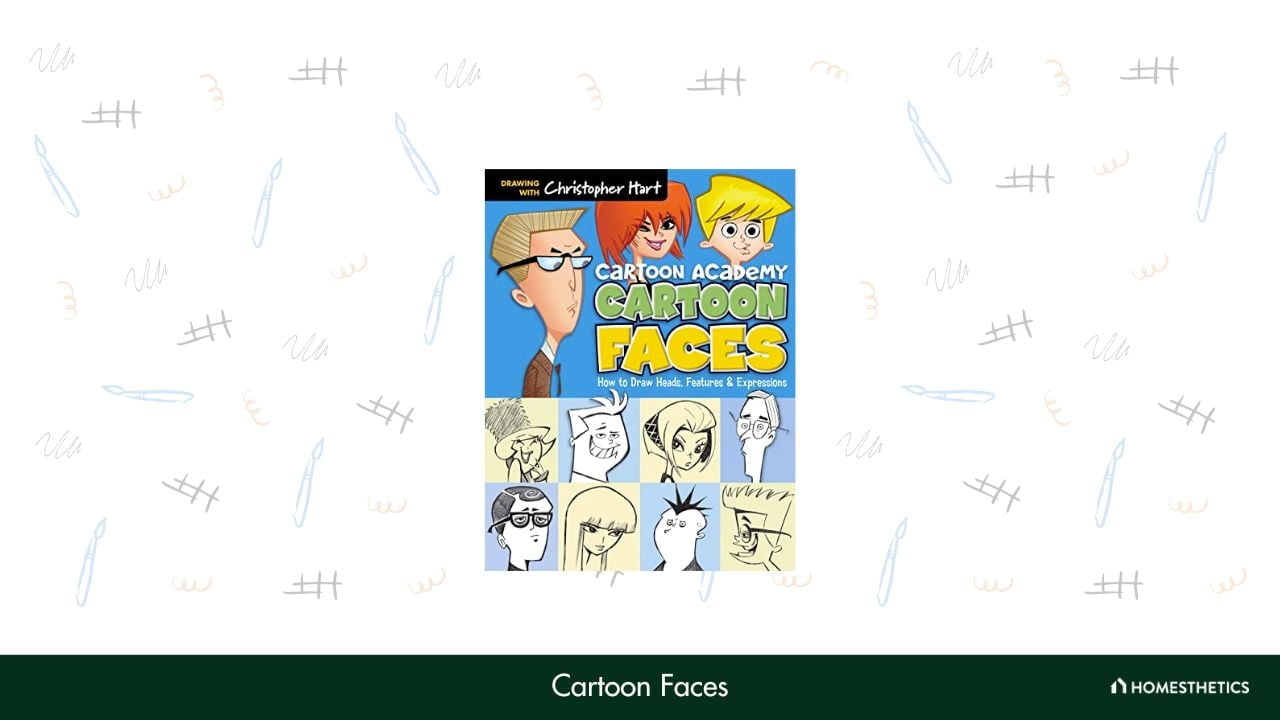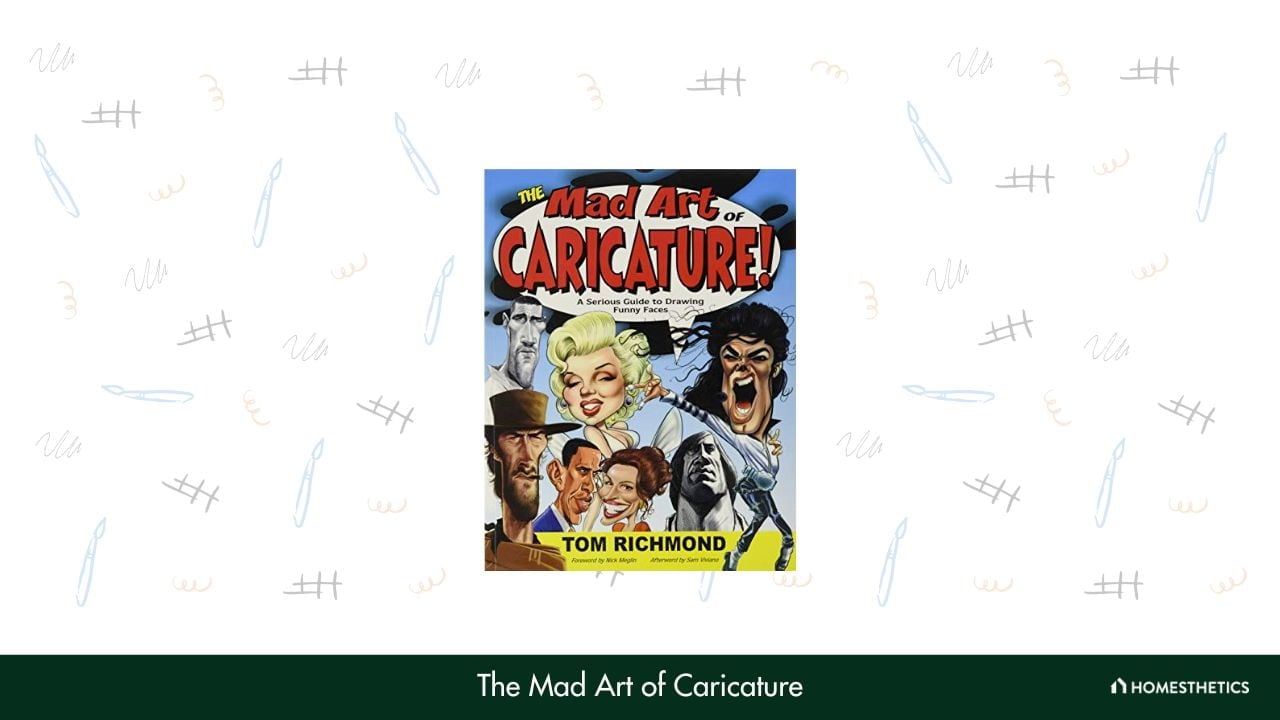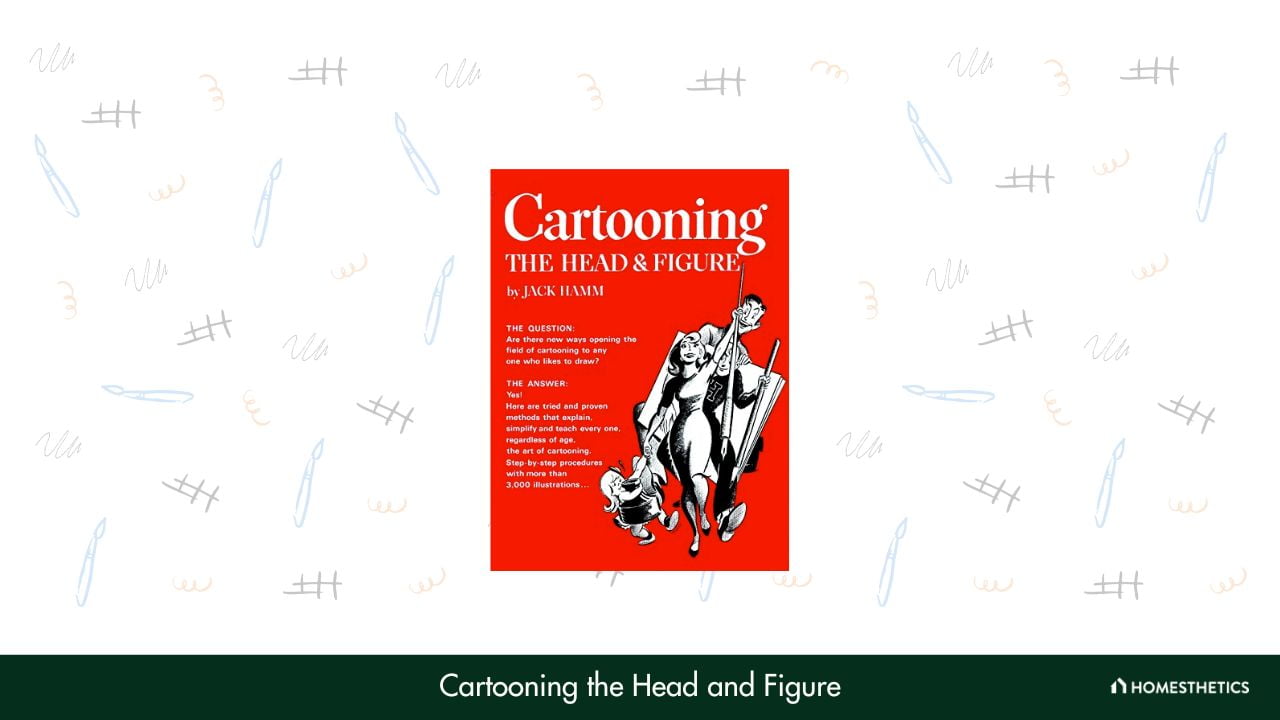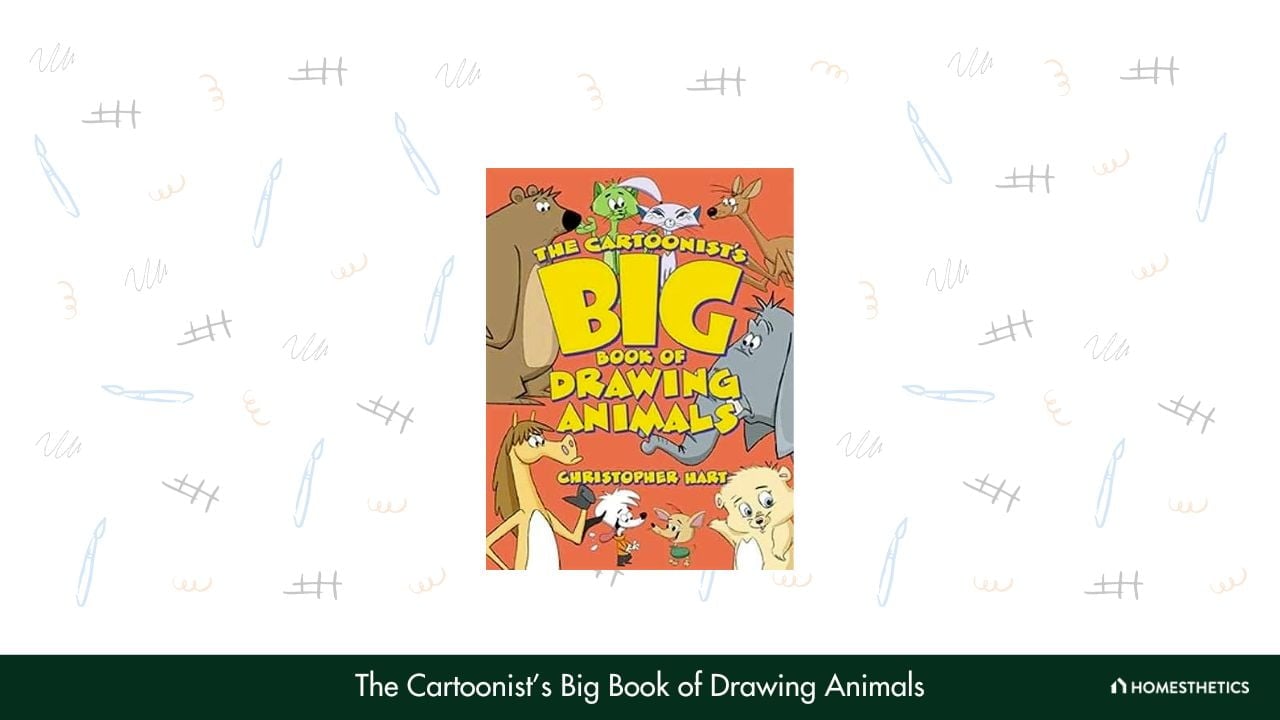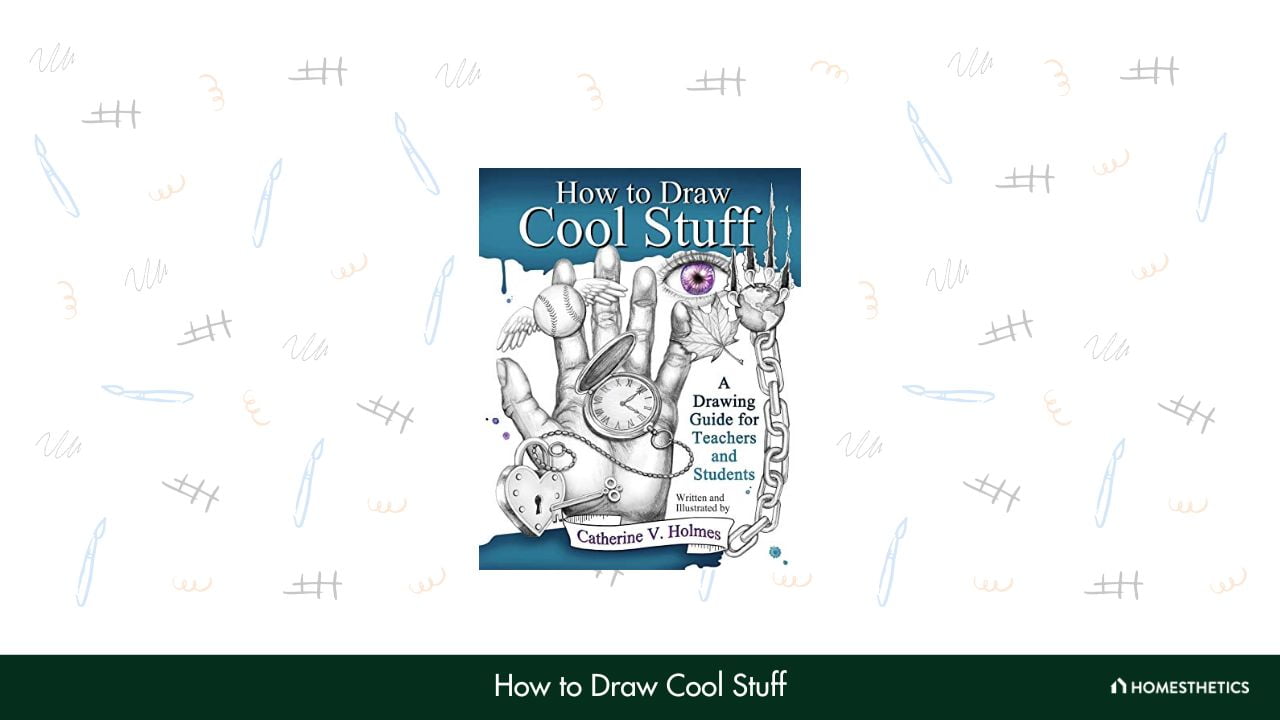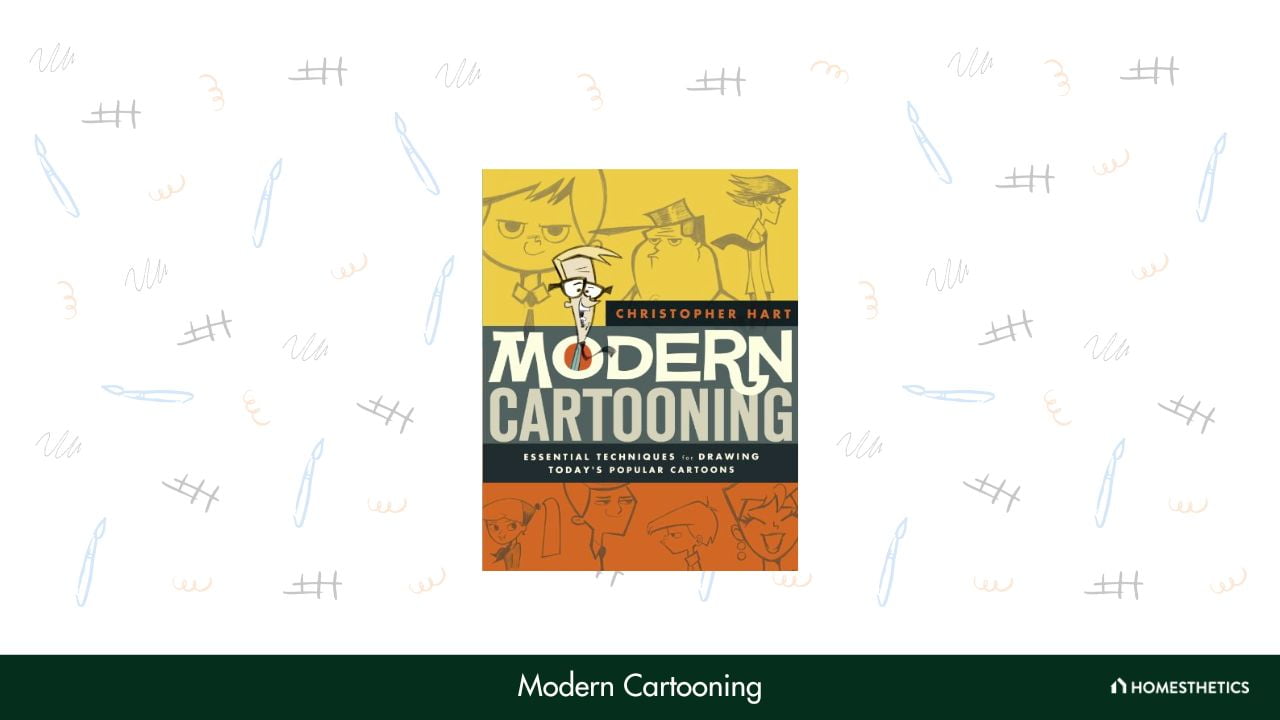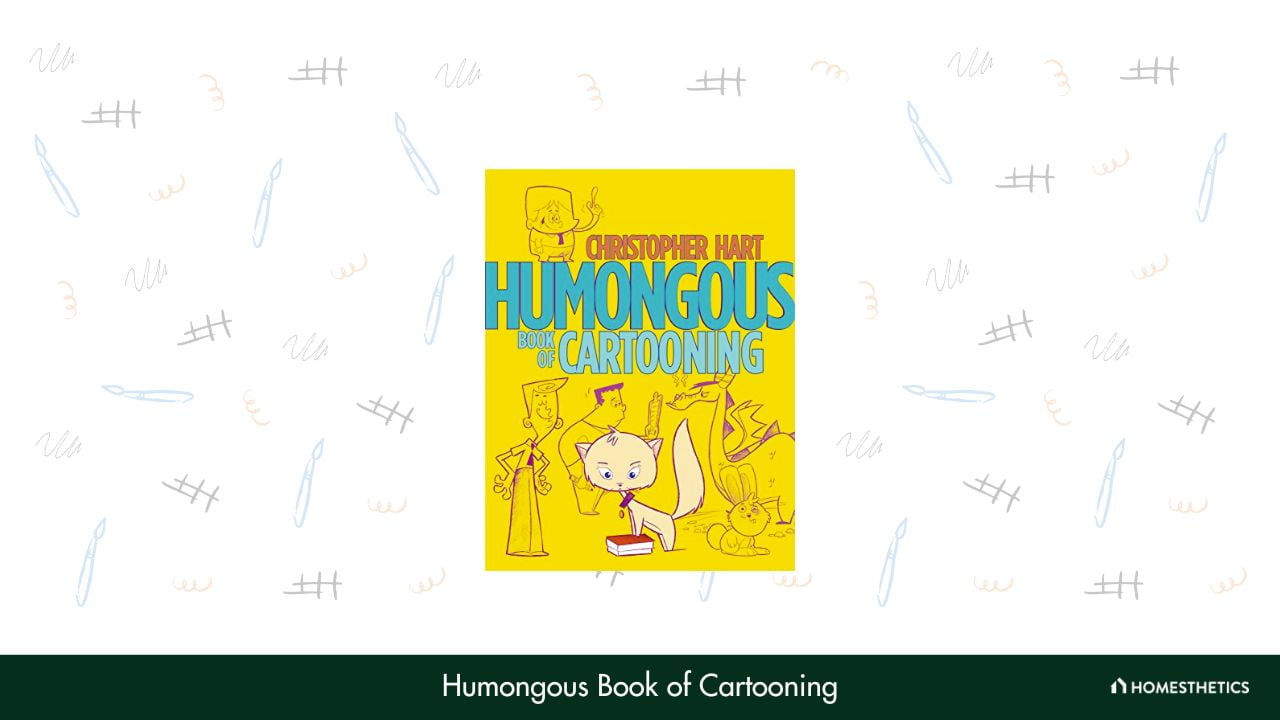Cartooning is so much more than simply drawing a few figures - without good writing, the best of artwork has no value.
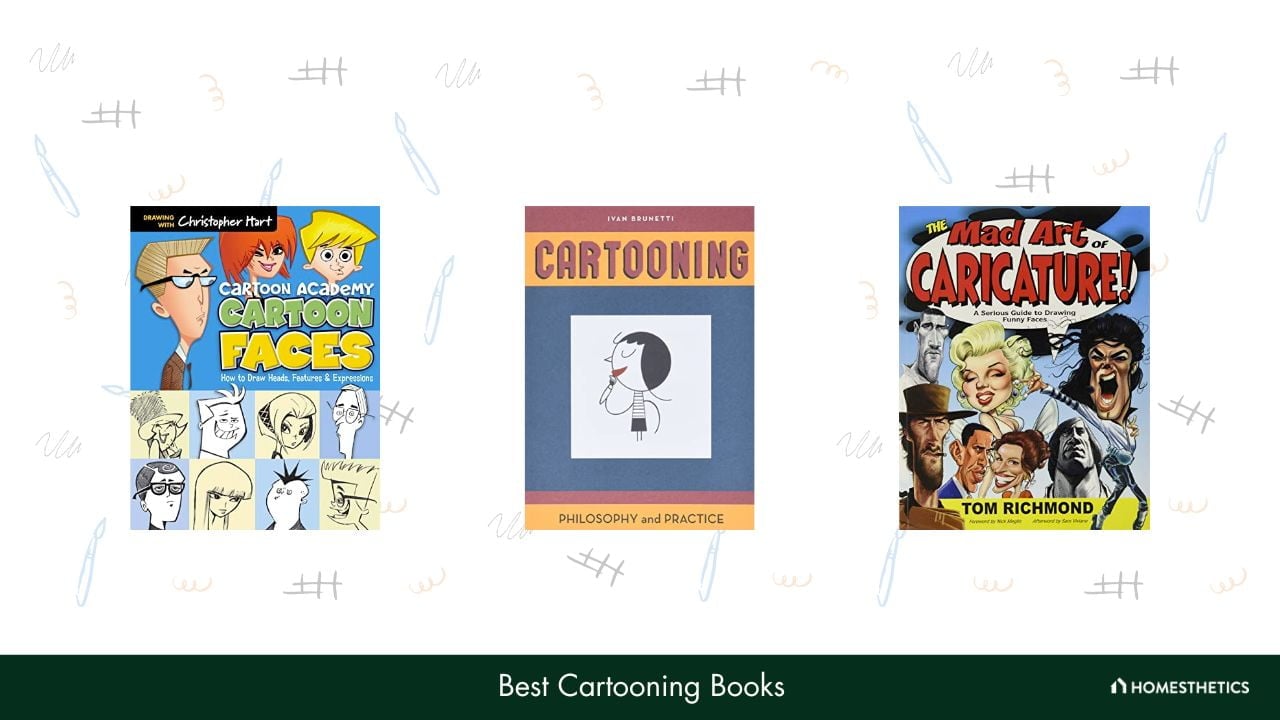
And similarly, if the cartooning characters aren't expressive enough, even the wittiest of one-liners and jokes fall flat.
Drawing cartoons isn't just about exaggerating a few facial features or comedic timing. Every artist has a style of their own, which they display in their stories and characters and their perspectives on the goings-on of the world around us.
Such a complicated craft requires a deft master and someone you can look to for advice. If you have to reach the top, you have to stand on the shoulders of giants first.
Without further ado, the best cartooning books follow!
Best Cartooning Books
Do you want to learn how to create your own cartoon characters and comics? Cartooning is a great way to express yourself creatively and tell stories. Here is the list of 8 best cartooning books to help you get started:
-
Cartooning | Philosophy and Practice by Ivan Brunetti - Best for Personal Style Development
If you're new to the game and you don't know where to start, this is it. This book isn't exactly a step-by-step guidebook rather, it's about the art of cartooning itself and what it's all about.
This book takes an in-depth look at how storytelling works, what's most important when conceptualizing characters, and all the types of media and tools you can experiment with. But it also delivers solid knowledge of all the fundamental elements of comic book design.
This is the ideal book for forging your personal style and discovering your own design and virtual language. In the beginning, you'd be in dire need of some perspective, and there's no better person to learn from than Ivan Brunetti, who has been featured several times in the NY Times and the New Yorker.
Contents
Ivan Brunetti presents 15 distinct lessons on cartooning and its progression through the ages. All these lessons are very wittily worded and have a lot of detail on common terminology, popular techniques, helpful tools, and of course, theory.
Brunetti's own illustrations make this a very lively book -and you will start with spontaneous drawings and then move to single-panel strips and ultimately, complicated multi-page stories. Simple exercises and assignments will help you move past your fears and will help you become more confident in your skills.
-
Cartoon Faces | How to Draw Heads, Features Expressions by Christopher Hart - Best for Beginner Facial Expressions
Everything about a cartoon begins at the face -all emotions are conveyed through the face, and the comic panel starts with a cartoon character's facial expressions.
This book focuses on all the elements of a cartoon character's face and how it can be painted to elicit specific emotions from the characters and the readers. Christopher Hart is one of the best in the business when it comes to writing art books, and this one is no exception.
If the last book on our list was about getting an overall perspective, this is the step-by-step guide.
Contents
This book is the ultimate tutorial on the head, face, and expressions. This book has detailed sections on the eyebrows, mouths, and eye shapes so that you can cover a wide spectrum of emotions.
If that's not enough, there are also chapters on both male and female faces, from newborn babies to adults, in differing shapes and sizes.
It's not enough to know just how to draw a face, you will also need to learn how to turn that face in different directions, all the while maintaining the visual integrity of the character. There is also a chapter on shading the face and a bonus chapter on how to draw body parts conforming to the face.
This book is geared towards absolute beginners who have no background in art but have a knack for coming up with comic situations and witty words.
-
The Mad Art of Caricature | A Serious Guide to Drawing Funny Faces by Tom Richmond - Best for Mastering Caricatures
The caricature is the only form of the comic which have real-life people as their inspirations. Most celebrities and world-renowned people have a unique set of facial characteristics, which are then exaggerated to comic effect.
It can be hard to teach someone to distort facial features while still keeping the rest of the features proportional. Thus it can only be taught by someone like the award-winning Tom Richmond, who draws on three decades of experience as a caricaturist, in various fields such as books, advertising, video games, film, television animation, and even MAD magazine.
Contents
Every chapter focuses on something different, and it will teach you how to notice subtle differences in everyone, and then you can decide on what to exaggerate.
You'll be taught how to observe faces and people and then what to exaggerate to make for a successful caricature. You'll learn about all the different types of caricatures depending on what you're drawing for.
Put simply, "The Mad Art of Caricature!" is the Holy Grail of the book drawing caricatures. It is the most comprehensive and complete book on the art of caricature to ever be published with over 500 illustrations, laid out in a very reader-friendly way.
This book is regarded as one of the classic art books and is one of the most popular cartooning books available for sale online. If Cartoon Faces only covered the face, this book provides a more holistic and all-around approach to drawing cartoons.
This book is targeted to everyone regardless of age or artistic talent or experience. The only requirement is that you are a fan of doodling and you want to get better at it.
Contents
It's hard to find a book that simplifies things to a greater extent than this one. The whole human anatomy is broken down into a series of very easily realizable shapes. It has over 3000 illustrations, to teach you how to draw everything from facial muscles to postures to motion.
The best feature about this book is that it is designed so that you can go at your own pace from one chapter to another. You can also very easily pick up where you left off, even if you took a months-long break.
However, the only drawback is that the painting style feels like the Sunday comics in a newspaper. It might feel a little dated and old-school, but it is still an excellent book for beginners.
This is the second book by Christopher Hart that's on our list. Anthropomorphizing animals is nothing new and has been around since Tom and Jerry. Early MGM Studios and Disney did a lot to make animal cartoons popular.
This book regularly makes the top 50 Art Books lists and is super popular online, in no small measure due to its immense simplicity and the sheer number of different animals you will learn to draw with the help of this book.
Contents
This book is divided into chapters depending on the kind of animal you wish to draw. Each of these chapters has in-depth information on how to capture every different emotion and how to draw each body part of that animal like faces, paws, feet, wings, and tails. In total, this book numbers more than 200 pages.
All the popular animals are present - which includes cats, dogs, horses, lions, penguins, bears, tigers, and elephants. Apart from that, you also have all the sidekick animals like pigs, kangaroos, giraffes, and turtles.
Simple, guided tutorials show you how to portray every emotion from cutesy-sweet with huge eyes to begging to scheme with malicious eyes. There are similar instructions for drawing animals that fit certain roles from baby animals to villains to completely clueless animals and much more.
Leaving the generic title aside, this book does have a lot of cool stuff in it. At its heart, it is a very simple drawing book aimed at teachers and students. As a result, it's mostly suited for children and early beginners.
If you've got some amount of experience as an artist, it's better to buy a more advanced book. In fact, this is a series of books. If you want a more advanced book, you could consider purchasing the other, more focused installments in this series.
Contents
Each chapter of the book starts off with a small introduction to the technique, fundamentals, and how to start your paintings with an end goal in mind.
However, right after, it wastes no time diving right into step-by-step illustrations. This book teaches you the basic principles of illustration by showing you how to draw simple shapes that eventually turn into complex drawings.
The best feature of this book is that, at the end of every chapter, there is a series of fun and hands-on exercises. These exercises will help you look at an object or a figure as an artist would - as a series of interconnected lines, shapes, and other elements. Also, these exercises will ensure you retain whatever you learned in that chapter.
From hyperrealistic portraits to holiday themes and tropes to drawings of tattoos, How To Draw Cool Stuff makes everything a cakewalk and explains everything as you would to a 5-year-old, literally.
This is the third book by the same author on our list and is one of his best-known titles. This one takes an in-depth look at character creation for illustrators.
Creating a likable and engaging character is the most important facet of creating a cartoon character. Before you get started with telling your stories, you first have to make up an enigmatic character.
Contents
This book takes away all the guesswork and uncertainty when it comes to creating a cartoon character by simply providing the reader with a very fresh and easy approach. This book is highly influenced by the most popular cartoon characters of our times and aims to show certain similarities among them.
It's s 160 pages long and is full of lively illustrations that provide a guided approach to conceiving and creating interesting characters. Chris's guides are super detailed, and he teaches the reader to observe a drawing and then improve upon it with their own ideas.
This book is chock-a-block full of useful tips and hints, and it will give you all the help you need to let your imagination run riot.
All the other books on this list either focus on certain types of cartoons, like faces, people, animals, etc. or they are beginner's guides to getting started.
None of them are complete or all-around books, though, which cover every aspect of creating cartoons. This book aims to accomplish the hardest task of all - give the reader an artistic vision so they can give their cartoons their own distinct style and shape.
It's the most all-around cartooning book you can buy, which has a huge amount of depth and covers almost everything in today's world of cartoons, making it great value for money.
Contents
This book has over 200 pages and teaches you how to draw almost everything from fantasy characters to background designs to common pop icons.
This book has step-by-step guides on how to draw cartoon people and cartoon animals, retro-style "toons'," and even robots like Wall-E. These guides are detailed and complete in every respect from the design to the composition to explaining exactly what is appealing about the cartoon.
The Humongous Book of Cartooning isn't just big, it has a huge number of tips and hints that Chris is famous for. The eye-catching characters and extensive visuals pack with them more instructions and guidelines than any Chris Hart book before it. In short, if you want to buy one book that covers most of everything about drawing cartoons, this is it!
Best Cartooning Books Comparison Table
| Product | Author | Publication Year | Format | Page Count | Target Audience | Skill Level | Key Topics Covered |
|---|---|---|---|---|---|---|---|
| Cartooning | Philosophy and Practice by Ivan Brunetti | Ivan Brunetti | 2011 | Paperback | 128 | Adults, Art Students | Intermediate | Cartooning concepts, exercises, history |
| Cartoon Faces | How to Draw Heads, Features Expressions by Christopher Hart | Christopher Hart | 2014 | Paperback | 160 | Teens, Adults, Art Students | Beginner/Intermediate | Cartooning techniques, facial features, expressions |
| The Mad Art of Caricature | A Serious Guide to Drawing Funny Faces by Tom Richmond | Tom Richmond | 2011 | Paperback | 224 | Teens, Adults, Art Students | Intermediate/Advanced | Caricature techniques, exaggeration, composition |
| Cartooning the Head and Figure by Jack Hamm | Jack Hamm | 1986 | Paperback | 160 | Teens, Adults, Art Students | Beginner/Intermediate | Anatomy, perspective, proportions, shading |
| The Cartoonist’s Big Book of Drawing Animals by Christopher Hart | Christopher Hart | 2016 | Paperback | 256 | Teens, Adults, Art Students | Beginner/Intermediate | Animal anatomy, expressions, movement, composition |
| How to Draw Cool Stuff by Catherine V. Holmes | Catherine V. Holmes | 2014 | Paperback | 253 | Kids, Teens, Adults, Art Students | Beginner/Intermediate | Optical illusions, 3D shapes, shading, textures |
| Modern Cartooning by Christoper Hart | Christopher Hart | 2013 | Paperback | 160 | Teens, Adults, Art Students | Beginner/Intermediate | Cartooning styles, character design, storytelling |
| Humongous Book of Cartooning by Chris Hart | Christopher Hart | 2011 | Paperback | 256 | Kids, Teens, Adults, Art Students | Beginner/Intermediate | Cartooning techniques, character design, storytelling |
Are there any free online resources for learning cartooning?
Yes, there are many free online resources for learning cartooning, including tutorial videos on YouTube, blogs, and forums where artists share tips and advice. However, keep in mind that not all online resources are of equal quality, and it can be difficult to gauge the accuracy and reliability of information found online.
Can cartooning books help me develop my own style?
Yes, while cartooning books typically teach a specific style or approach to cartooning, they can also provide a foundation for you to develop your own unique style. By learning the fundamentals of character design, anatomy, and composition, you can experiment with different techniques and create your own cartooning style.
Do I need to have drawing experience to read cartoon books?
No, you don’t necessarily need to have drawing experience to read cartooning books. Many books are geared toward beginners and provide step-by-step instructions for drawing basic shapes, characters, and expressions. However, having some basic drawing skills and familiarity with art supplies can be helpful.
How long does it take to learn to cartoon?
The time it takes to learn cartooning can vary depending on your level of commitment and dedication, as well as your natural talent and artistic abilities. Some people may pick up the basics quickly and be able to create simple cartoons within a few weeks, while others may need months or even years of practice to develop their skills.
Are there cartoon books specifically for children?
Yes, cartooning books specifically designed for children use simple language and illustrations to teach basic cartooning skills. Some popular options include “Cartooning for Kids” by Mark Bergin, “How to Draw Cartoons for Kids” by Christopher Hart, and “The Kids’ Guide to Drawing Cartoons” by Mark Kistler.
Can cartooning books help me make a career as a cartoonist?
While reading cartooning books can certainly help you develop your skills as a cartoonist, there are many factors that go into building a successful career in this field. In addition to artistic talent and skill, you may also need to develop business skills, build a portfolio, network with other artists, and seek out professional opportunities in the industry.
Conclusion
Thank you for taking the time to read through our article on the best cartooning books! It's evident that there are several amazing choices out there, each addressing different aspects of the art. We hope that the insights provided in this article have fueled your excitement for cartooning and will assist you in taking your skills to new heights.
Out of these 8 best cartooning books, here are our top three recommendations:
Ivan Brunetti's Cartooning | Philosophy and Practice is an ideal option for those who want to forge their personal style and discover their design and visual language. With Brunetti's lively illustrations and engaging lessons, this book is perfect for intermediate artists who want to deepen their understanding of the cartoon world.
Cartoon Faces | How to Draw Heads, Features, and Expressions by Christopher Hart is a good option for absolute beginners or intermediate artists who want a step-by-step guide on drawing cartoon faces. The detailed sections on various facial features and the coverage of different age groups make this book an essential resource for mastering the ability to convey emotions through cartoon expressions.
The Mad Art of Caricature | A Serious Guide to Drawing Funny Faces by Tom Richmond is the right choice for those who are passionate about caricature art. This book offers a comprehensive guide to observing real-life people and their features, teaching you how to exaggerate them effectively for the perfect caricature. If you want to level up your skills in this specialized form of cartooning, this book is the one for you.
As you continue to explore and develop your cartooning skills, remember that practice is key. Keep experimenting with new techniques, learn from these excellent resources, and most importantly, let your imagination run wild. Stay passionate about your art and have fun on this exciting journey! Happy cartooning!
Related Articles
8 Best Cartooning Books For Artists
16 Best Maya Books for Beginners & Professionals
25 Best Concept Art Books for Artists
22 Best Drawing Books for Beginners
11 Best Adult Coloring Books That Will Color Your Mood


